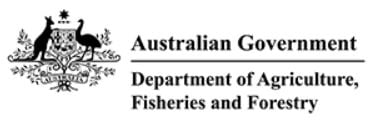Livestock Production Assurance (LPA)
Livestock Production Assurance (LPA) is an independently audited on-farm assurance program. It is a formal commitment to undertake specific on-farm practices that mean Australian red meat is safely and ethically produced. It is a guarantee that producers stand by what they sell.
Becoming accredited with LPA means that livestock producers agree to abide by the LPA Rules and Standards, including the seven requirements of LPA, which cover:
- Assessing risks on farm
- Treating animals safely and responsibly
- Managing pasture and fodder treatments
- Preparing animals for dispatch
- Documenting livestock transactions and movements
- Maintaining biosecurity practices
- Adhering to animal welfare practices
LPA National Vendor Declaration (LPA NVD)
The LPA National Vendor Declaration (LPA NVD) communicates the food safety status of every animal every time it moves along the value chain - between properties, to saleyards, or to processors. The NVD also acts as movement documentation throughout the value chain. An eNVD is an electronic version of the NVD.
Producers must be LPA accredited to access LPA NVDs or eNVDs.
Commodity Vendor Declaration (CVD)
The Commodity Vendor Declaration (CVD) is part of Australia's red meat, grain and fodder industry's commitment to delivering safe products. CVDs require suppliers of commodities intended for use as livestock feed or fodder to declare whether chemicals have been used during production. This information ensures that only commodities free of chemical residues are used as livestock feed or fodder and hence that the livestock are residue free.
Property Identification Codes (PIC)
A Property Identification Code (PIC) is a unique code assigned to each livestock-producing property. Producers need to have a PIC to move livestock on and off a property. PICs are issued by state and territory departments.
National Livestock Identification System (NLIS)
The National Livestock Identification System (NLIS) enables livestock to be traced from their property of birth to slaughter. Livestock must be tagged with an approved NLIS device (such as an ear tag or rumen bolus) before they leave the property. These tags allow animal movements to be recorded in a central, national database. Using this information, the NLIS is able to provide a life history of an animal's movements and discern if contact with other livestock occurred.
National Feedlot Accreditation Scheme
The National Feedlot Accreditation Scheme (NFAS) is an independently audited quality assurance program for the Australian lotfeeding industry that was initiated by the Australian Lot Feeders' Association (ALFA) and is managed by the Feedlot Industry Accreditation Committee (FIAC).
TruckSafe Animal Welfare
TruckSafe's Animal Welfare (formerly TruckCare) is an audited quality assurance program for livestock transport. It covers animal welfare, food safety and traceability. The program is built around the quality assurance principles contained in international standards and also uses hazard analysis of critical control points. The program is a voluntary module of TruckSafe, which is managed by the Australian Trucking Association.
National Saleyard Quality Assurance (NSQA)
Under the National Saleyard Quality Assurance (NSQA) program, livestock identification procedures are in place to ensure full livestock traceability is maintained throughout the saleyard process. Transactions are recorded in the NLIS database.
Food Standards Code
The standards in the Australia New Zealand Food Standards Code are legislative instruments under the Legislation Act 2003. Food Standards Australia New Zealand (FSANZ) develops standards that regulate the use of ingredients, processing aids, colourings, additives, vitamins and minerals, as well as food composition, foods developed by new technologies and labelling requirements for packaged and unpackaged food.
The Australian Export Meat Inspection System (AEMIS)
The Australian Export Meat Inspection System (AEMIS) is an integrated set of controls specified and verified by Government that ensure the safety, suitability and integrity of Australian meat and meat products for the export market. The Department of Agriculture, Fisheries and Forestry is responsible for ante-mortem inspection and verification of post-mortem inspection and processor hygiene practices.
Primary Production and Processing Standards (Australia only)
FSANZ developed the Primary Production and Processing (PPP) standards (which only apply in Australia) based on a policy guideline on primary production and processing, provided by the Australian government. The PPP standards ensure that if there is a food incident, regulators will be able to investigate food safety matters through the entire meat supply chain. The PPP standards aim to strengthen food safety and traceability throughout the food supply chain from paddock to plate.









